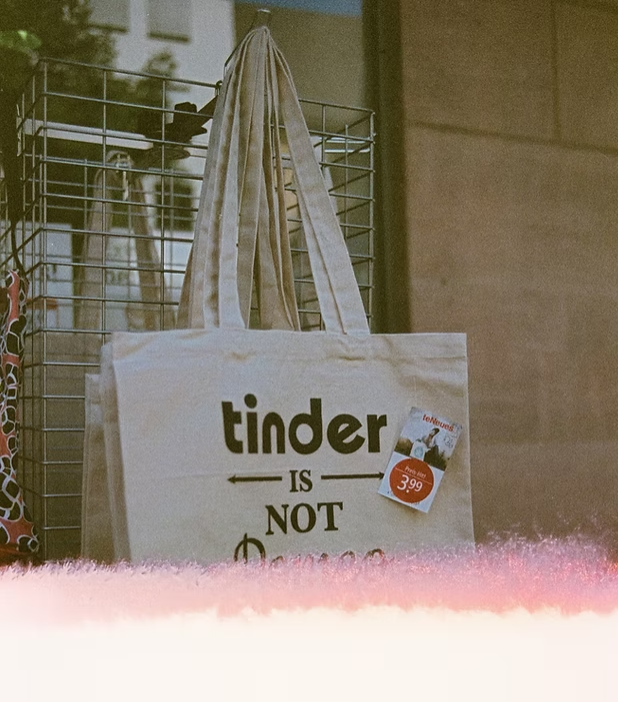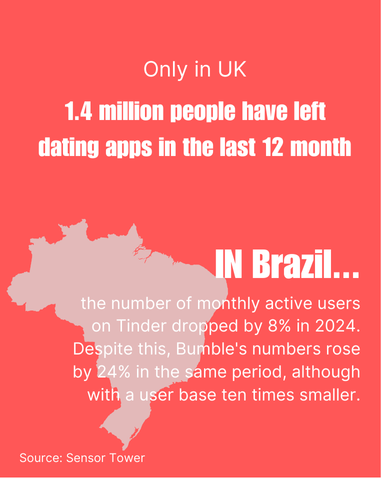
With the promise of quick and passionate encounters. Today, dating platforms have become almost as common as the phrase “Hey, stranger.” What once seemed like the solution for modern loneliness has transformed into a circuit of curated profiles and mostly soulless conversations. So, is the magic of digital love in decline?
Let’s rewind a bit. When dating apps began to boom, far from the Uol chat rooms, in 2012, when Tinder launched, the promise was simple: to connect people. No one talked about algorithms or gamification. It was about a screen full of faces and one single goal: to find that special someone, or at least company for the weekend. The concept seemed revolutionary and romantic—a swipe, a touch, and destiny was set.
As dating apps grew in popularity, a new type of relationship emerged: one that depends on our ability to sell the best version of ourselves in a confined space, with a photo and a few-character description.
But while many still find success and even love through these platforms, others have started to question the effectiveness and authenticity of virtual interactions. In recent years, dating apps have been seen as the revolution of flirting. Tinder, Bumble, Grindr, and others entered the scene with promises of quick encounters and love at first swipe.
According to a 2023 market intelligence survey by Savanta, 9 out of 10 Gen Z individuals are moving away from dating apps. What started as a search for quick connections has turned into a series of disappointments, frustrations, and well… dating burnout. The reason? Simple: frustration, insecurity, and, of course, the superficiality of available profiles.


What’s happening?
Is it a matter of saturation? A lack of real chemistry? Or perhaps a new wave of detachment from digital relationships?
What might explain this transition from digital “burnout” to reconnecting with real life is a shift in the behavior of younger generations. Instead of continuing to swipe through screens, many are opting for more organic, “offline” encounters. After all, there’s something profoundly empty about swiping right if it’s not followed by a real conversation, a genuine connection. These apps, originally designed to facilitate meeting people, have ended up becoming an endless cycle of conversations that don’t evolve, with expectations that are rarely met. Users now see dating apps as more of an administrative task than a social experience.
“I think a lot of people see it as a game, interacting in ways they would never do in real life because they’re behind a screen and don’t have to deal with the consequences of bad behavior.”
— Natasha McKeever, Professor of Applied Ethics at the University of Leeds and Co-Director of the Center for Love, Sex, and Relationships (CLSR), The Guardian
Moreover, the phenomenon of “ghosting” has become a point of frustration on many of these platforms. The ease of disappearing without explanation, which may feel liberating for those who do it, has caused significant emotional damage to those who experience it. This contributes to the feeling of disconnection and the sense that relationships are not as genuine as they once were.
Although traditional dating apps are facing challenges, this does not mark the end of digital flirting but rather a shift in how people connect. Niche apps, such as Grindr, or platforms more focused on the LGBTQ+ community, continue to see stable or even growing numbers. Personalization and inclusion seem to be the new guiding principles for online relationships.
Even with its ups and downs, digital love still has its place in the game. When the chemistry is real, that right swipe can indeed lead to something more serious. It doesn’t matter if it’s via Tinder or a more niche platform. So, if you still believe it’s possible to find something meaningful out there, you’re not alone. Digital flirting may not be dead, just evolving.